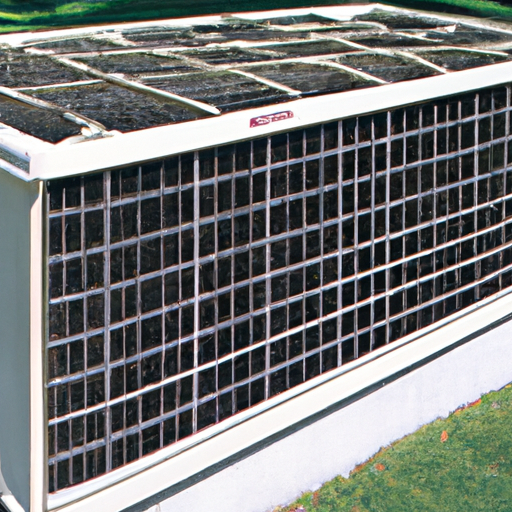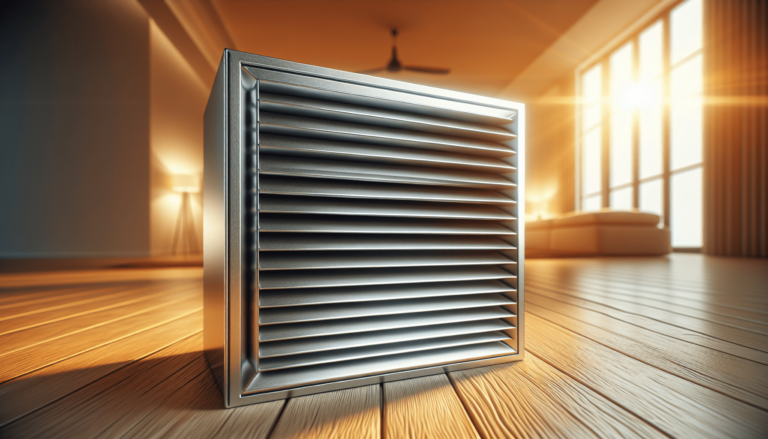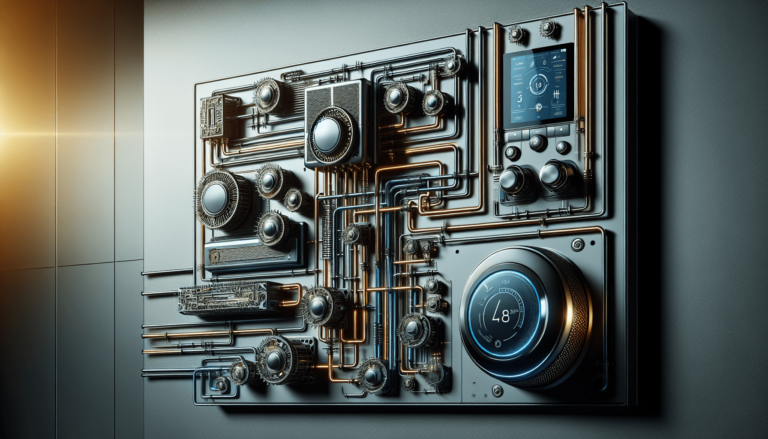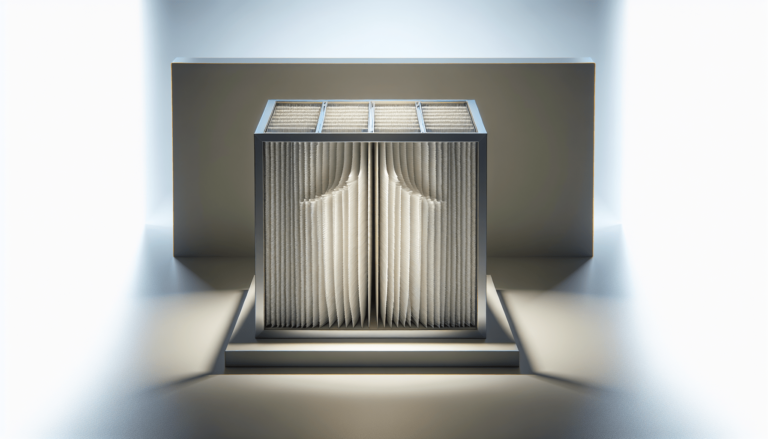

HVAC Services
Get Professional Repairs From The Area's Trusted HVAC Technicians. Ask About Our Services! We Offer Professional Heating & Cooling System Repairs And Guarantee Long-Lasting Results.
Got Question? Call us: (850) 678-2665Financing
Boosting HVAC Efficiency: Tips For Large Buildings
Boost HVAC efficiency in large buildings with these valuable tips. Save energy, reduce costs, and create a comfortable environment. Learn more here.

Are you looking for ways to optimize the efficiency of your HVAC system in a large building? Look no further! In this article, we will provide you with valuable tips that are specifically designed to improve the performance of HVAC systems in large buildings. Whether you are a facility manager or a building owner, these tips will help you save energy, reduce operating costs, and create a comfortable environment for everyone. From regular maintenance to smart thermostat installation, we’ve got you covered. So, let’s dive in and discover how you can boost the efficiency of your HVAC system in large buildings!
Proper Maintenance
Regular Filter Replacement
Keeping your HVAC system running smoothly and efficiently begins with regular filter replacement. The filters in your system are responsible for trapping dust, dirt, and other particles that can clog your system and reduce its performance. By replacing your filters on a regular basis, you can ensure that your system is able to effectively circulate clean air throughout your building. This not only helps to maintain a healthy indoor environment but also prevents unnecessary strain on your HVAC equipment.
Cleaning Coils
Another important aspect of proper maintenance is cleaning the coils in your HVAC system. Over time, dirt and debris can accumulate on the coils, which can hinder the transfer of heat and reduce the efficiency of your system. By regularly cleaning the coils, you can remove this buildup and optimize the performance of your HVAC system. This will not only help to reduce energy consumption but also extend the lifespan of your equipment.
Inspecting Ducts
Proper airflow is essential for an efficient HVAC system, and one common cause of restricted airflow is ductwork that is damaged or improperly installed. By inspecting your ducts on a regular basis, you can identify any leaks, gaps, or other issues that may be impacting the airflow in your building. Sealing these air leaks and ensuring that your ducts are properly insulated can greatly improve the efficiency of your HVAC system and reduce energy waste.
Optimizing System Settings
Programmable Thermostats
One of the most effective ways to optimize your HVAC system’s settings is by installing programmable thermostats. These thermostats allow you to set different temperature schedules throughout the day, so you can adjust the temperature based on occupancy and usage patterns. By programming your thermostats to reduce heating or cooling during periods of low activity, you can significantly reduce energy consumption and lower your utility costs.
Zone Control
Implementing zone control in your building can further enhance the efficiency of your HVAC system. With zone control, you can divide your building into different zones and control the temperature independently in each zone. This allows for more precise temperature control and eliminates the need to heat or cool unoccupied areas. By directing conditioned air only where it’s needed, you can minimize energy waste and improve overall comfort.
Temperature Setpoints
Setting appropriate temperature setpoints is crucial for optimizing your HVAC system’s efficiency. For cooling, it is recommended to set the thermostat at 78°F (25.5°C) during occupied periods and increase it to 82°F (27.8°C) during unoccupied periods. In winter, setting the thermostat to 68°F (20°C) during occupied periods and reducing it to 55°F (12.8°C) during unoccupied periods can result in significant energy savings. Adjusting your temperature setpoints can help you strike a balance between comfort and energy efficiency.
Improving Insulation
Sealing Air Leaks
One of the most cost-effective ways to improve insulation in your building is by sealing air leaks. Air leaks can occur around windows, doors, electrical outlets, and any other gaps or cracks in your building envelope. By identifying and sealing these air leaks, you can prevent the infiltration of outside air and the escape of conditioned air, which can lead to energy waste. Proper air sealing techniques, such as using weatherstripping and caulk, can make a noticeable difference in your HVAC system’s efficiency.
Adding Insulation
Another effective way to enhance insulation is by adding insulation to your building’s walls, ceilings, and floors. Insulation acts as a barrier to heat transfer, helping to maintain a comfortable indoor temperature while reducing the workload on your HVAC system. The specific type and amount of insulation needed will depend on your building’s construction and climate. Consulting with a professional insulation contractor can help you determine the best insulation solutions for your specific needs.
Double-Glazed Windows
Upgrading to double-glazed windows can also contribute to improved insulation in your building. Double-glazed windows consist of two panes of glass with a layer of insulating gas in between. This design helps to reduce heat transfer, keeping the indoor temperature more stable and reducing the need for excessive heating or cooling. In addition to better insulation, double-glazed windows also provide improved sound insulation and can enhance the overall comfort of your building.
Enhancing Airflow
Balancing Dampers
Balancing dampers play a crucial role in ensuring proper airflow throughout your building. These dampers are installed in the ductwork and can be adjusted to control the amount of air flowing to different areas or zones. By balancing these dampers, you can distribute the airflow evenly, preventing hot and cold spots and optimizing the performance of your HVAC system. Regularly inspecting and adjusting the dampers can help to maintain a balanced airflow and improve energy efficiency.
Installing Ventilation Fans
Ventilation fans are an excellent way to enhance airflow and improve indoor air quality in your building. These fans can be strategically placed in areas with poor air circulation or high humidity, such as bathrooms, kitchens, or storage rooms. By continuously extracting stale air and replacing it with fresh air, ventilation fans help to remove pollutants, control moisture levels, and maintain a healthy and comfortable indoor environment. Installing energy-efficient ventilation fans can further contribute to energy savings.
Clearing Obstructions
Obstructed airflow can greatly reduce the efficiency of your HVAC system. It’s important to regularly inspect your vents, registers, and air intakes to ensure they are not blocked by furniture, equipment, or other objects. Additionally, make sure that there are no obstructions in front of your outdoor unit, such as plants or debris. Clearing any obstructions and ensuring unobstructed airflow can greatly improve the performance and energy efficiency of your HVAC system.
Consider Energy Recovery Ventilation
Heat Recovery Ventilators (HRVs)
Energy recovery ventilation systems, such as heat recovery ventilators (HRVs), are designed to improve indoor air quality while minimizing energy loss. HRVs use the heat from the outgoing stale air to preheat incoming fresh air during the cold months, and vice versa during the hot months. This heat exchange process reduces the workload on your HVAC system and helps to maintain a consistent indoor temperature. By implementing HRVs, you can ensure a continuous supply of fresh air without compromising energy efficiency.
Energy Recovery Ventilators (ERVs)
Similar to HRVs, energy recovery ventilators (ERVs) also exchange heat but go a step further by also exchanging humidity. This is particularly beneficial in climates with high humidity. By transferring the humidity from the incoming air to the outgoing air, ERVs help to control indoor moisture levels and reduce the strain on your HVAC system. Implementing ERVs can significantly improve energy efficiency while enhancing indoor air quality.
Ductwork Modifications
To fully optimize your energy recovery ventilation system, it’s crucial to ensure that your ductwork is properly designed and installed. Proper ductwork design can minimize pressure losses and optimize airflow distribution, maximizing the benefits of your energy recovery ventilation system. Consulting with a professional HVAC contractor who specializes in energy recovery ventilation can help you determine the right ductwork modifications needed to achieve maximum efficiency.
Implementing Variable Air Volume Systems
Benefits of VAV Systems
Variable air volume (VAV) systems offer several benefits when it comes to HVAC efficiency. These systems are designed to deliver varying amounts of airflow to different areas or zones based on individual temperature requirements. By dynamically adjusting the airflow, VAV systems can prevent over-conditioning and reduce energy waste. Additionally, VAV systems allow for better comfort control and can adapt to changing occupancy patterns. The flexibility and energy-saving capabilities of VAV systems make them a popular choice for large buildings.
Air Handling Units (AHUs)
Air handling units (AHUs) are an integral part of VAV systems. AHUs are responsible for conditioning and distributing air throughout your building. They include components such as fans, filters, heating and cooling coils, and dampers. To maximize the efficiency of your VAV system, it’s important to ensure that your AHUs are properly sized and maintained. Regularly inspecting and cleaning the components of your AHUs can ensure optimal airflow and efficient operation.
Thermal Diffusers
Thermal diffusers are an essential component of VAV systems as they play a key role in delivering conditioned air to each zone or area. These diffusers are designed to release air at a specific temperature and flow rate based on the zone’s requirements. Properly selecting and installing thermal diffusers can ensure that your VAV system operates efficiently and provides the desired comfort levels. Consulting with an HVAC professional during the design and installation process can help you optimize the performance of your thermal diffusers.
Utilizing High-Efficiency Equipment
Upgrading to Energy Star Equipment
One of the most effective ways to improve HVAC efficiency is by upgrading to high-efficiency equipment that meets the Energy Star standards. Energy Star equipment is designed to consume less energy while providing the same level of performance as standard equipment. Upgrading to Energy Star-rated HVAC equipment, such as air conditioners, heat pumps, and furnaces, can result in significant energy savings and lower operating costs. When selecting new equipment, look for the Energy Star label to ensure you’re choosing the most energy-efficient options.
Energy-Efficient Chillers
Chillers are a critical component of HVAC systems in large buildings, particularly in commercial and industrial settings. Upgrading to energy-efficient chillers can have a substantial impact on your energy consumption. High-efficiency chillers use advanced technologies, such as variable speed drives and advanced controls, to optimize their performance and reduce energy waste. These chillers can deliver the same cooling capacity while consuming significantly less energy, resulting in substantial cost savings.
Condensing Boilers
For buildings that utilize hydronic heating systems, upgrading to condensing boilers is a smart choice for improving efficiency. Condensing boilers are designed to extract heat from exhaust gases that would typically be wasted in conventional boilers. By capturing and utilizing this heat, condensing boilers can achieve high levels of efficiency, often surpassing 90%. This means that less fuel is needed to produce the same amount of heat, resulting in lower energy consumption and reduced operating costs.
Efficient Lighting and Control Systems
LED Lighting
Lighting is a significant contributor to a building’s energy consumption, and upgrading to energy-efficient lighting solutions can make a substantial impact. LED lighting is a popular choice for large buildings due to its exceptional energy efficiency and long lifespan. LED lights use significantly less energy compared to traditional incandescent or fluorescent lights, while providing the same level of brightness. By replacing outdated lighting fixtures with LED lights, you can achieve significant energy savings and reduce maintenance costs.
Occupancy Sensors
Occupancy sensors are a valuable addition to lighting control systems in large buildings. These sensors detect motion and occupancy within a space and automatically turn the lights on or off accordingly. By ensuring that lights are only used when needed, occupancy sensors help to minimize energy waste. They are particularly effective in areas with fluctuating occupancy, such as restrooms, conference rooms, and storage areas. Installing occupancy sensors can result in substantial energy savings and a quick return on investment.
Building Automation Systems
Building automation systems (BAS) provide centralized control and monitoring of various building systems, including HVAC, lighting, and security. These systems can be programmed to optimize energy efficiency by coordinating the operation of different systems based on occupancy schedules and other factors. With a BAS, you can automate temperature setbacks, lighting schedules, and other energy-saving strategies to minimize energy waste. By integrating your HVAC system with a building automation system, you can achieve maximum efficiency and improve overall building performance.
Monitoring and Analysis
Energy Management Systems
Monitoring the energy consumption of your HVAC system and other building systems is essential for identifying inefficiencies and implementing corrective measures. Energy management systems (EMS) allow you to track and analyze energy usage in real-time, providing valuable insights into your building’s performance. These systems can help you identify patterns, detect anomalies, and make data-driven decisions to optimize energy efficiency. By implementing an EMS, you can proactively identify and address energy inefficiencies, leading to significant cost savings.
Real-Time Performance Monitoring
Real-time performance monitoring of your HVAC system can provide valuable insights into its operation and efficiency. With the help of sensors and specialized software, you can track various parameters such as temperature, humidity, airflow, and energy consumption in real-time. This continuous monitoring allows you to promptly identify any deviations from normal operating conditions and take corrective actions. Real-time performance monitoring can also provide early warning signs of potential failures, allowing for timely maintenance or repairs.
Identifying Inefficiencies
Regularly analyzing data from your energy management and performance monitoring systems can help you identify inefficiencies within your HVAC system. By looking for patterns and abnormalities in energy consumption, temperature fluctuations, or equipment runtime, you can pinpoint areas that require improvement. This information can guide you in making informed decisions regarding equipment upgrades, maintenance schedules, and energy-saving strategies. Identifying and addressing inefficiencies in your HVAC system can result in significant energy savings and improved overall performance.
Educating Building Occupants
Promoting Energy Conservation
Educating building occupants about the importance of energy conservation can play a significant role in improving HVAC efficiency. By raising awareness about energy-saving practices, such as turning off lights when not in use, setting thermostats appropriately, and reporting any issues with the HVAC system, occupants can actively contribute to reducing energy waste. Regular communication, signage, and educational materials can help promote a culture of energy conservation throughout your building.
Providing Energy-Saving Tips
In addition to promoting energy conservation, providing building occupants with practical energy-saving tips can further support your efforts to improve HVAC efficiency. Tips such as using natural ventilation when possible, closing blinds during hot days to reduce solar heat gain, and properly maintaining filters can help occupants make conscious choices that lead to energy savings. Sharing these tips through newsletters, posters, or digital platforms can empower occupants to take an active role in optimizing energy usage.
Scheduling HVAC Trainings
Conducting HVAC training sessions with building occupants can enhance their understanding of how the system works and how to use it efficiently. By educating occupants about the proper operation of thermostats, the purpose of ventilation fans, and the importance of regular maintenance, you can empower them to make informed decisions related to HVAC usage. These training sessions can also provide an opportunity to address any questions or concerns, fostering a collaborative approach to energy efficiency and ensuring that occupants feel empowered to contribute to the overall goals of the building.
By implementing these tips and strategies, you can greatly enhance the efficiency of your HVAC system in a large building. From proper maintenance and optimized system settings to insulation improvements and energy recovery ventilation, there are numerous opportunities to reduce energy waste and lower operating costs. By taking a comprehensive approach to HVAC efficiency, you can create a comfortable and sustainable environment for your building occupants while minimizing your environmental impact.







